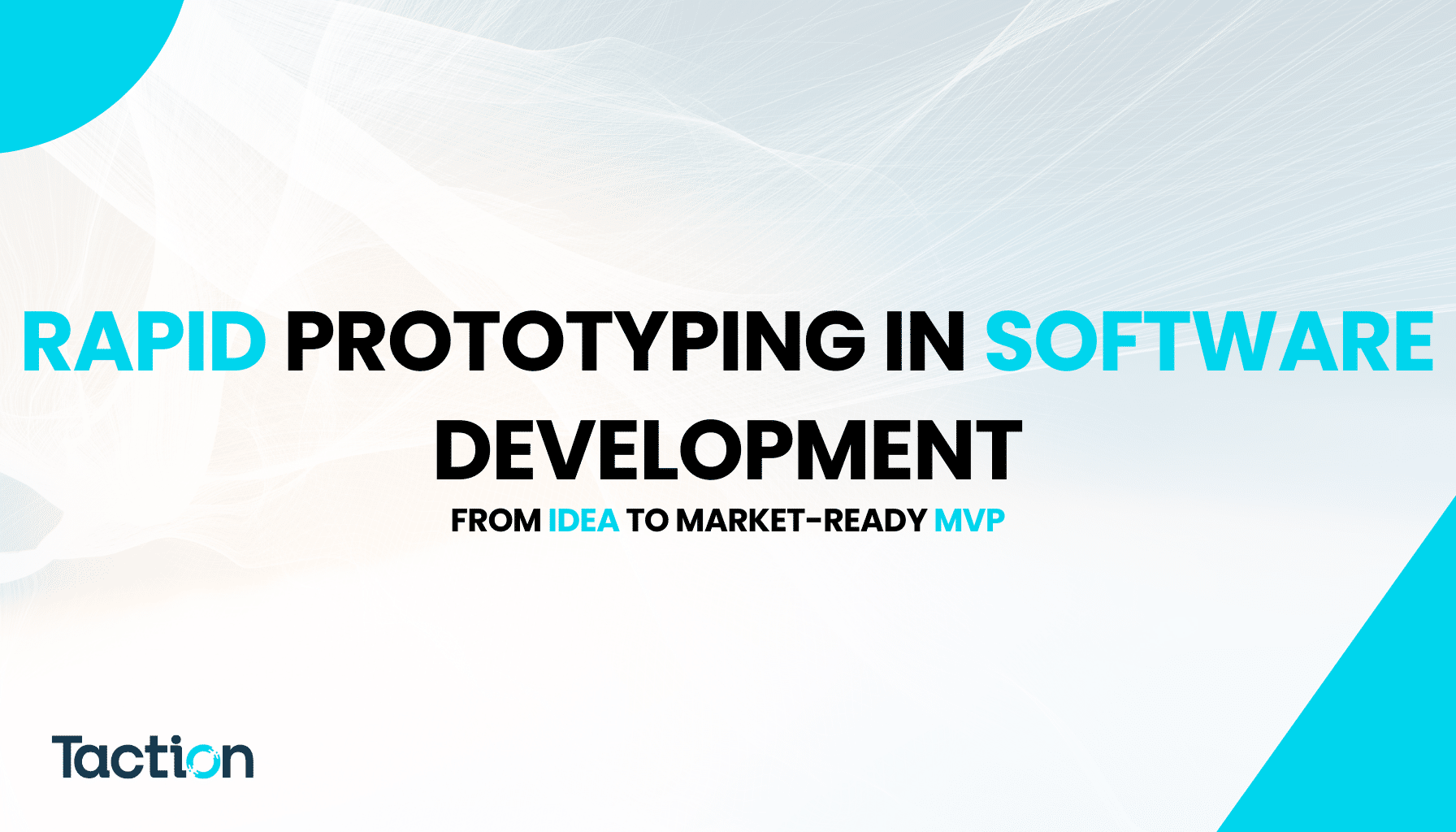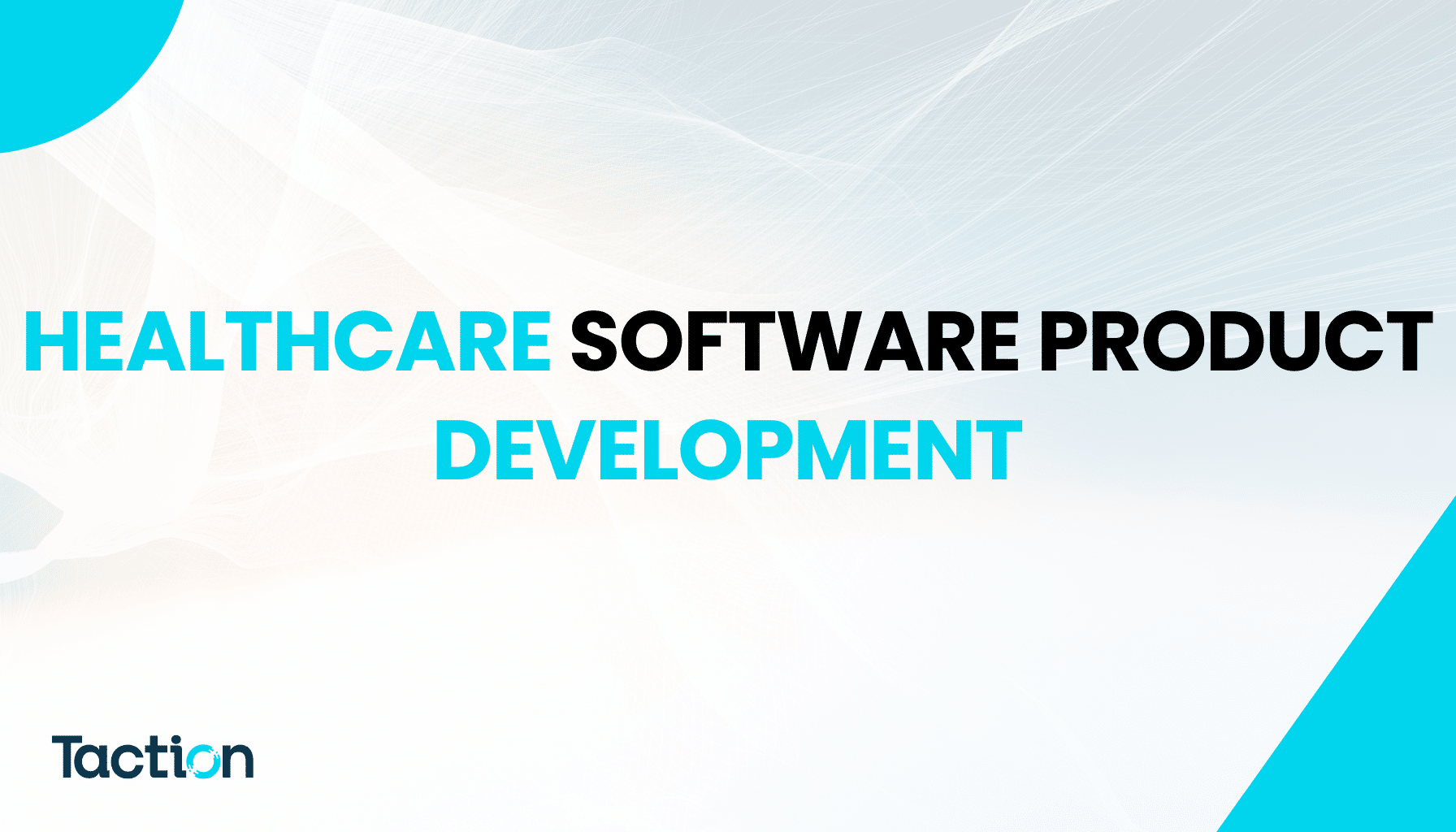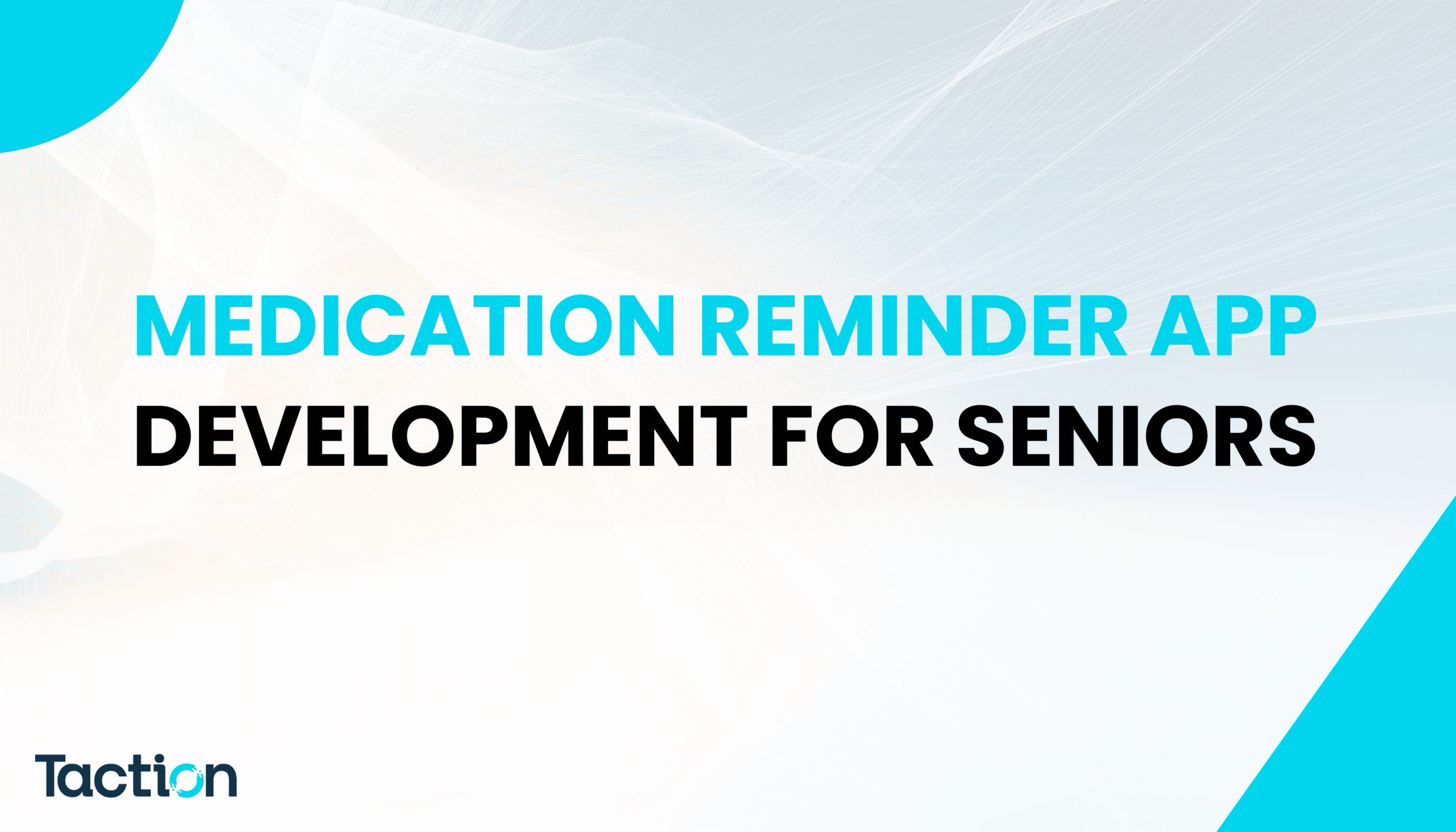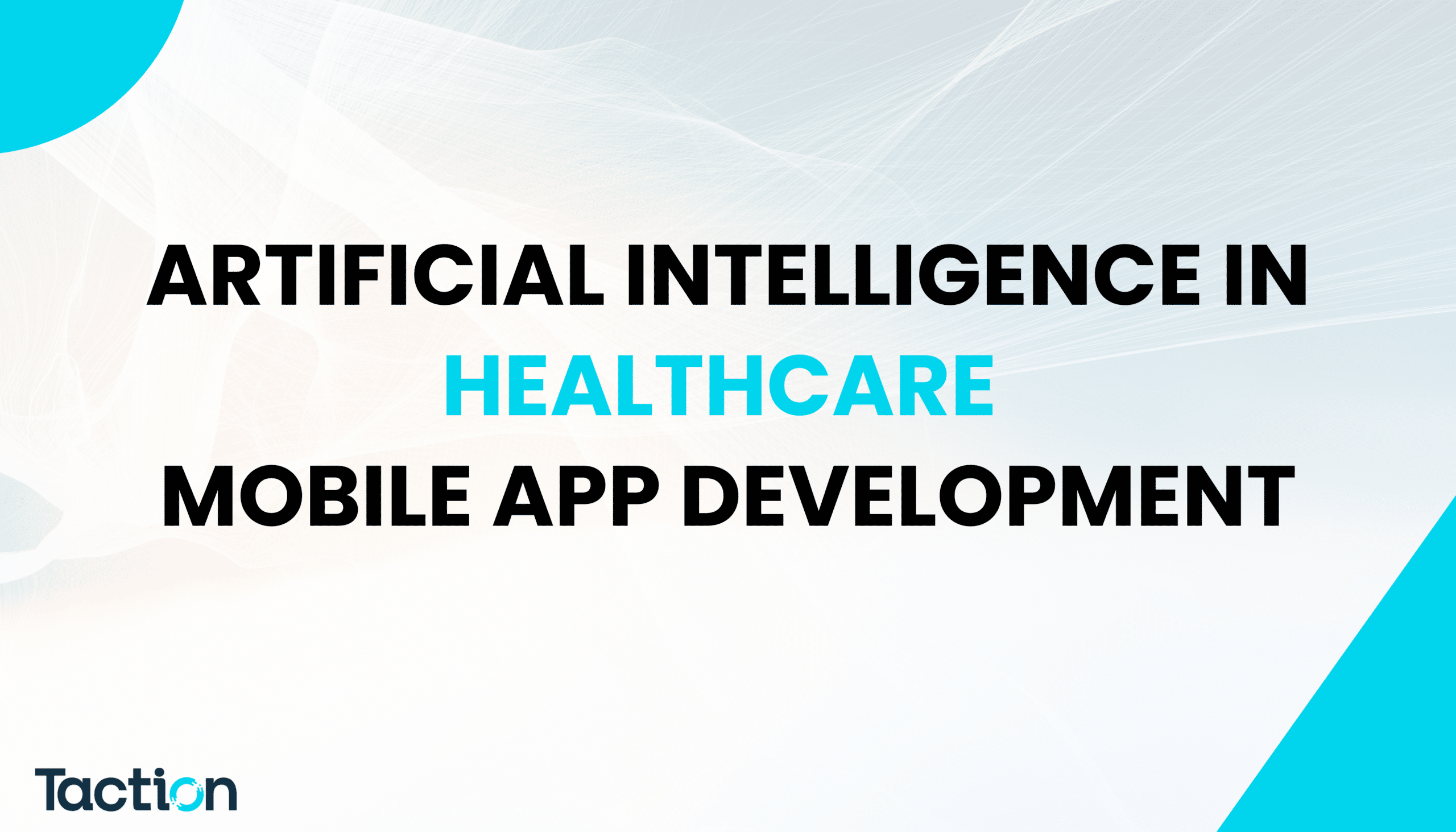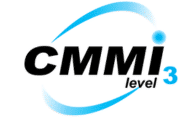In today’s fast-moving digital world, businesses can no longer afford year-long software development cycles. Users expect quick, seamless solutions, while competitors are launching products faster than ever. This is where rapid prototyping in software development changes the game. By turning ideas into working models quickly, companies gain early feedback, reduce risks, and shorten the path from concept to market.
At its core, rapid prototyping software is about creating functional mockups and iterating on them until the final product meets both business goals and user needs. Unlike traditional methods, it allows teams to experiment, validate, and refine without wasting months on rigid planning.
With more than 20 years of expertise in healthcare IT, Taction Software has helped organizations—from startups building their first MVP to hospitals requiring HIPAA-compliant apps—leverage rapid prototyping to innovate faster and smarter.
In this guide, we’ll walk you through everything you need to know: the techniques of software prototyping, how the RAD methodology compares to traditional models, the best prototyping tools for developers, and the real business impact of bringing prototypes to market quickly.
What Is Rapid Prototyping in Software Development?
Rapid prototyping in software development is the practice of quickly creating interactive models of an application to test functionality, design, and user experience before committing to full-scale development. Unlike generic software prototyping, which may involve static wireframes or basic visuals, rapid prototyping emphasizes speed and iteration—delivering functional mockups that stakeholders and end-users can interact with.
This approach is closely tied to the Rapid Application Development (RAD) methodology, which prioritizes adaptability over rigid planning. Instead of spending months defining every requirement upfront, RAD enables teams to build, test, gather feedback, and refine through iterative prototyping. The result is a more user-centered process that reduces miscommunication, accelerates decision-making, and leads to software that better aligns with real-world needs.
Turn Your Idea Into Reality
Validate your concept faster with our rapid prototyping expertise.
Why Rapid Prototyping Matters Today
In an environment where customer expectations evolve rapidly, time-to-market has become a critical success factor. Businesses that take too long to launch risk losing relevance, while those that adapt quickly gain a competitive edge. Rapid prototyping software helps organizations shorten development cycles by validating ideas early and refining them through real user feedback.
Beyond speed, prototyping also reduces risk and minimizes technical debt. By identifying usability issues, workflow gaps, or compliance concerns during the prototype stage, teams avoid costly rework after full development. This lean, iterative approach ensures that products are built right the first time.
In industries like healthcare IT, the value is even greater. For example, hospitals and digital health startups rely on rapid prototyping to test HIPAA-compliant patient portals, telemedicine apps, and EHR integrations before going live. This not only accelerates innovation but also safeguards compliance and patient trust from day one.
Core Benefits of Rapid Software Prototyping
The true power of rapid prototyping in software development lies in the tangible benefits it delivers across the entire product lifecycle.
- Reduce development time with prototyping – Instead of spending months on static documentation, teams can move quickly from concept to interactive models. This shortens project timelines and helps align stakeholders early.
- Increase user satisfaction via prototyping – By involving end-users in testing prototypes, businesses gain valuable insights into usability, design, and functionality. This user-centered approach ensures the final product truly meets expectations.
- Prototype to market faster – Prototyping allows startups and enterprises to validate ideas early, secure stakeholder buy-in, and accelerate product launches. For healthcare organizations, this means rolling out compliance-ready solutions faster without sacrificing quality.
- Minimize technical debt through early iteration – Iterative prototyping exposes flaws and gaps before full coding begins. Catching issues early prevents costly rework later, reducing technical debt and ensuring smoother long-term scalability.
Together, these benefits make rapid prototyping not just a development practice, but a strategic investment that balances speed, quality, and innovation.
Rapid Application Development (RAD) Methodology Explained
The Rapid Application Development (RAD) methodology is a software development approach designed to deliver high-quality applications quickly through iterative prototyping and continuous user feedback. Unlike traditional models that emphasize lengthy planning, RAD focuses on adaptability and collaboration, making it especially valuable in today’s fast-paced digital landscape.
The RAD process typically follows four key stages:
- Requirements Planning – Identify business needs, user expectations, and project scope.
- Prototyping – Build functional prototypes that stakeholders can interact with.
- User Feedback – Gather insights from real users and refine the prototype.
- Final Build – Convert the validated prototype into a production-ready application.
When comparing RAD vs. Waterfall in software development, the difference is clear. Waterfall follows a rigid, linear path where each phase must be completed before the next begins, often leading to delays and misalignment with user needs. RAD, on the other hand, thrives on iteration and user involvement, ensuring the final product is both faster to build and more aligned with real-world requirements.
Build Smarter, Not Slower
Accelerate software delivery without sacrificing quality.
Types of Software Prototyping Techniques
Software prototyping comes in different forms, each serving a unique purpose depending on the project’s goals and stage.
- Low-fidelity mockups – These are simple sketches or wireframes used to visualize layout, workflows, and navigation. They are fast to create, inexpensive, and perfect for validating early concepts with minimal effort.
- High-fidelity interactive models – These go beyond visuals by simulating real interactions, design aesthetics, and user flows. High-fidelity prototypes provide a near-final experience, making them ideal for testing usability and securing stakeholder buy-in.
In an iterative prototyping software development cycle, teams often start with low-fidelity versions, refine them based on feedback, and gradually evolve into high-fidelity models before moving to development.
For a startup MVP, low-fidelity mockups are best for quickly validating ideas with potential users or investors. Enterprises, however, often require high-fidelity prototypes for complex platforms, ensuring scalability, compliance, and seamless integration before committing to large-scale builds.
Tools That Power Rapid Prototyping in Software Development
The success of rapid prototyping software often depends on choosing the right tools. Modern platforms allow developers and designers to collaborate, test ideas quickly, and bring prototypes closer to production-ready models.
- Best prototyping tools for software developers – Tools like Figma, Adobe XD, Axure RP, and InVision dominate the space, offering everything from wireframing to interactive design testing.
- Figma vs Adobe XD for prototyping – Figma is widely praised for its cloud-based collaboration, making it ideal for distributed teams. Adobe XD, on the other hand, integrates seamlessly with the Adobe ecosystem, offering a familiar workflow for creative professionals.
- Axure RP prototyping software – Known for its advanced functionality, Axure supports conditional logic and data-driven interactions, making it useful for enterprise-grade applications that demand complex user flows.
- Low-code prototyping platforms – Tools like OutSystems or Mendix enable teams to build working prototypes with minimal coding. This accelerates development for businesses looking to validate apps quickly without heavy engineering investment.
Together, these tools empower teams to adapt their approach—whether building a lightweight MVP or refining enterprise-scale software—making rapid prototyping for software development faster, more collaborative, and more effective.
Rapid Prototyping for Startup MVPs and Enterprises
Startups often turn to rapid prototyping for software development to validate their Minimum Viable Product (MVP) quickly. By creating functional mockups, they can test core features with real users, attract investors, and refine concepts without burning through limited resources. This lean approach allows them to prototype to market faster, ensuring they launch only what customers truly need.
For enterprises, the value lies in scaling innovation quickly. Large organizations can use rapid prototyping to pilot new features, explore emerging technologies, and roll out updates across complex platforms without disrupting existing systems.
Both startups and enterprises benefit from a user-centered design rapid prototyping approach, where end-users are actively involved in the feedback loop. This ensures that whether it’s an MVP or an enterprise solution, the final product is intuitive, efficient, and aligned with user expectations.
Reduce Risk, Save Costs
Catch issues early with compliance-ready prototypes.
Advantages of Rapid Prototyping in Software Development
One of the biggest strengths of rapid prototyping in software development is how it accelerates decision-making and reduces uncertainty.
- Faster stakeholder buy-in – Interactive prototypes give stakeholders a tangible view of the product early on, making it easier to secure approvals, funding, or client confidence before heavy development investment begins.
- Cost savings through early feedback – By testing assumptions and catching issues at the prototype stage, organizations avoid expensive rework during coding or deployment. This lean approach ensures budgets are spent wisely.
- Better alignment with end-user needs – Engaging real users in testing ensures that the product’s design, functionality, and workflows match actual expectations, resulting in higher adoption and satisfaction rates.
Ultimately, these advantages make rapid prototyping a strategic choice for businesses aiming to balance speed, cost-efficiency, and user-centered outcomes.
Business Value: From Prototype to Market Success
Beyond technical benefits, rapid prototyping in software development delivers measurable business value. By validating ideas early and refining them with real feedback, companies gain a competitive edge—launching products that are not only faster to market but also more aligned with user expectations.
In sectors like healthcare IT, where compliance and usability are equally critical, rapid prototyping enables organizations to test features such as secure patient portals, telemedicine apps, or HIPAA-compliant workflows before full-scale rollout. This ensures that compliance-driven solutions meet both regulatory and user requirements from the start.
Adopting a prototype-to-market faster strategy also allows businesses to outpace competitors, respond to changing market demands, and establish stronger customer loyalty. Whether it’s a startup validating its MVP or an enterprise innovating at scale, rapid prototyping turns concepts into growth opportunities.
Challenges and Best Practices in Rapid Prototyping
While rapid prototyping software offers speed and flexibility, it also comes with challenges if not managed carefully. Teams often struggle with scope creep, where too many features are added during prototyping, diluting focus and delaying progress. Another common issue is over-engineering prototypes—spending excessive time refining models that were only meant for validation.
To overcome these pitfalls, a few best practices stand out:
- Involve users early to capture real-world feedback before development begins.
- Keep iterations lean, focusing on validating critical features first.
- Use the right tools—from low-fidelity sketches to advanced prototyping platforms—based on the project’s stage and complexity.
At Taction Software, we apply a structured prototyping approach honed through 20+ years in healthcare IT HIPAA-compliant app development. By balancing speed with compliance, usability, and scalability, we help businesses turn prototypes into production-ready solutions without unnecessary risks or delays.
Future of Rapid Prototyping in Software Development
The next wave of rapid prototyping in software development is being shaped by AI and automation. AI-assisted prototyping tools can now generate design suggestions, predict user flows, and even auto-generate code snippets, accelerating the move from idea to functional model. Alongside this, the rise of low-code prototyping platforms is making it easier for non-technical teams to validate concepts without heavy coding.
Rapid prototyping is also becoming tightly integrated into agile and DevOps pipelines, ensuring that continuous feedback and iteration happen seamlessly throughout development. This shift makes prototyping not just an early-stage activity but an ongoing driver of product evolution.
For industries like healthcare IT, where compliance and security are non-negotiable, the future demands compliance-ready prototyping—solutions built with HIPAA and regulatory requirements in mind from the very first iteration. This ensures innovation doesn’t compromise trust, security, or patient safety.
Partner With Healthcare IT Leaders
Leverage 20+ years of HIPAA-compliant development expertise.
Final Thoughts – Partner with Experts Who Know Compliance and Speed
Rapid prototyping in software development delivers more than just speed—it ensures faster launches, reduced risk, and higher user satisfaction by aligning products with real-world needs early in the process. From startups building MVPs to enterprises scaling complex platforms, the approach transforms ideas into market-ready solutions with confidence.
With over 20+ years of proven expertise in healthcare IT, Taction Software stands out as a trusted partner that combines innovation with compliance. Our structured, user-centered approach helps organizations prototype smarter, scale faster, and stay ahead in competitive markets.
Ready to move from concept to launch without compromising quality or compliance? Book a consultation with our team today.
Most Asked Questions on Rapid Prototyping in Software Development
Rapid prototyping in software development is the process of quickly building interactive models of an application to test design, features, and user flows before full-scale coding begins. Unlike static wireframes, it allows teams to gather feedback early, make improvements faster, and reduce costly rework.
By creating functional mockups that can be tested and refined in short cycles, teams avoid long planning phases. This accelerates decision-making, validates concepts quickly, and shortens the overall time-to-market.
Key benefits include faster stakeholder buy-in, cost savings through early feedback, better alignment with user needs, reduced technical debt, and quicker product launches.
The Rapid Application Development (RAD) methodology is iterative, focusing on prototypes and user feedback at every stage. The Waterfall model, on the other hand, follows a rigid step-by-step process with limited flexibility for changes once development begins.
Popular tools include Figma, Adobe XD, and Axure RP, which offer varying levels of collaboration and interactivity. Low-code platforms like OutSystems and Mendix are also gaining traction for building prototypes with minimal coding effort.
Yes. Startups use rapid prototyping to validate MVPs with minimal investment, while enterprises rely on it to scale innovation, test compliance-driven solutions, and integrate new features without disrupting existing systems.
In healthcare IT, rapid prototyping allows organizations to test HIPAA-compliant features like patient portals, telemedicine apps, and EHR integrations before full deployment. This ensures compliance, usability, and security are built in from the start.

